Simon Magus ‘The Magician’ Who Faked Death And Resurrection
A. Sutherland - AncientPages.com - Simon the Sorcerer (or Simon the Magician) is a Biblical figure and Samaritan religious leader mentioned in Acts 8: 9-24. He lived at the turn of the 1st-2nd century AD and was a magician and miracle worker.
Simon's fall – a painting byBenozzo Gozzoli, 1462). Public Domain
He was born in an ancient village called Gitta (Gitton) in the country of Samaria, which historical and Biblical name is related to the central region of the Land of Israel, bordered by Judea to the south and Galilee to the north. Simon's name became famous, and people called him "Magus" because of his magic arts and also because, in his teachings, he announced himself as the "great power of God." Thus, he won many followers.
Often regarded as the founder of Gnosticism, Simon the Magus wished to obtain the power to perform miracles from the apostles. Other sources portray him as the individual responsible for the eclectic fusion of stoicism and Gnosticism, known as "The Great Pronouncement." 1
He used to practice black magic and astonished the people of Samaria and claimed to be something extraordinary. Still, many early Christians did not trust the Magician Simon Magus. He was considered a representation of Satan, who came to earth to alter and mislead the true faith. St. Cyril of Jerusalem, a theologian of the early Church, wrote that he was "the first Dragon of evil" who was "cast into hell." For other contemporary high-ranking members of the clergymen, he was the symbol of unrest, sin, and falsehood and the one through whom "all heresies came."
Nevertheless, like many of his fellow citizens, Simon was baptized, showing unity with the community of believers devoted to Jesus Christ. His attempts to show his true, inner dedication to the faith of Christ failed because he never had such commitment, but only selfish reasons to baptize.
The Apostles Paul and Peter confront Simon Magus before Nero, as painted by Filippino Lippi - Public Domain
He hoped to gain greater magical power and thus to increase his influence in society. All he wanted was to receive the opportunity to perform miracles for money. He offered the same money to the Apostles Peter and John, desiring them to grant him the magical power necessary for miraculous manifestations.
The Apostles warned Simon Magus of his actions' wickedness and rejected him. He left Christianity and created a Simonite sect dedicated to the master of divine worship, and he played a religious role. His mystical concept became popular in some circles, and his believers considered him as God (or Father) in human form. He was even sometimes worshiped as the incarnation of the Greek god Zeus.
He has received several faithful followers who honored him with a statue that stood in ancient Rome. His consort Helen was regarded by his followers as the earthly manifestation of the Greek goddess Athena.
Simon's scripture circulated under the name" the Great Annunciation," and almost all surviving testimonies about the life and views of Simon the Magus are included in ancient Christian writings. His doctrine has been long a subject of polemics.
The death of Simon Magus, from the Nuremberg Chronicle. Public Domain
It is challenging to present an accurate image of this controversial religious figure because he was often presented differently.
The Christian tradition has it that a remarkable and mystical duel took place between St. Peter and Simon at the Roman Forum in Rome, during the reign of the emperor Claudius (41 – 54 C). Simon the Magician was glorified by followers fascinated by his miracle-working. He wanted to demonstrate even more of his so-called skills. However, there has never been found any archaeological verification of this claim.
A legend says that Simon fell to his death from the Roman Forum when he attempted to demonstrate his ability to fly and once again impress the crowd. He was known to levitate and fly at will. At first, using his magic arts, Simon attempted to fake death and resurrection in the presence of the fifth Roman emperor Nero (54–68 CE), stepson and heir of the emperor Claudius, thus clearly ridiculing Christian doctrine.
At last, he desired to present the ascension, and while he was trying to fly Simon instead, he fell to his death from the Roman Forum to demonstrate his ability to fly and impress the crowd again.
Written by – A. Sutherland - AncientPages.com Senior Staff Writer
Copyright © AncientPages.com All rights reserved. This material may not be published, broadcast, rewritten or redistributed in whole or part without the express written permission of AncientPages.com
Expand for referencesReferences:
- Encyclopedia Britannica & Doniger W., Britannica Encyclopedia of World Religions
Mead G. R. S., Simon Magus
More From Ancient Pages
-
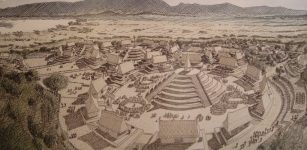 Circular Stepped Pyramids Of Guachimontones And Teuchitlan Tradition – A Lost Ancient World In Mexico
Civilizations | Mar 13, 2016
Circular Stepped Pyramids Of Guachimontones And Teuchitlan Tradition – A Lost Ancient World In Mexico
Civilizations | Mar 13, 2016 -
 Mayan Maize God And Ancient City Of El Mirador
Featured Stories | Apr 25, 2019
Mayan Maize God And Ancient City Of El Mirador
Featured Stories | Apr 25, 2019 -
 On This Day In History: Naval Battle Of Rennell Island Fought Off Guadalcanal – On Jan 29, 1943
News | Jan 29, 2017
On This Day In History: Naval Battle Of Rennell Island Fought Off Guadalcanal – On Jan 29, 1943
News | Jan 29, 2017 -
 Sobek: A 2,500-Year-Old Mummified Nile Crocodile – On Display At The British Museum
Archaeology | Dec 9, 2015
Sobek: A 2,500-Year-Old Mummified Nile Crocodile – On Display At The British Museum
Archaeology | Dec 9, 2015 -
 Why Have The Leibniz Keks 52 Teeth And Are Named After Philosopher Gottfried Wilhelm Leibniz?
Ancient History Facts | Mar 12, 2021
Why Have The Leibniz Keks 52 Teeth And Are Named After Philosopher Gottfried Wilhelm Leibniz?
Ancient History Facts | Mar 12, 2021 -
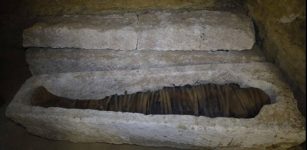 Tombs With Sarcophagi Of High Priests Including One Dedicated To Sky God Horus Unearthed In Egypt
Archaeology | Jan 31, 2020
Tombs With Sarcophagi Of High Priests Including One Dedicated To Sky God Horus Unearthed In Egypt
Archaeology | Jan 31, 2020 -
 On This Day In History: Battleship USS Maine Explodes And Sinks – On Feb 15, 1898
News | Feb 15, 2017
On This Day In History: Battleship USS Maine Explodes And Sinks – On Feb 15, 1898
News | Feb 15, 2017 -
 3,500-Year-Old Egyptian Tomb Of Guardian Of Pharaoh’s Secret Archive Discovered In Saqqara
Archaeology | May 7, 2022
3,500-Year-Old Egyptian Tomb Of Guardian Of Pharaoh’s Secret Archive Discovered In Saqqara
Archaeology | May 7, 2022 -
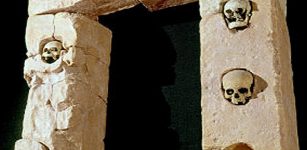 Ancient Cult Of Human Skulls And Communication With The Other World
Ancient Traditions And Customs | Mar 21, 2019
Ancient Cult Of Human Skulls And Communication With The Other World
Ancient Traditions And Customs | Mar 21, 2019 -
 Ephemeral Evidence Of Mediterranean Mobility – Boats, Migration, And The Central Mediterranean Passage In Focus
Archaeology | Dec 23, 2021
Ephemeral Evidence Of Mediterranean Mobility – Boats, Migration, And The Central Mediterranean Passage In Focus
Archaeology | Dec 23, 2021 -
 Mysterious Books From The Unknown And ‘Impossible’ Coincidences
Featured Stories | Dec 30, 2020
Mysterious Books From The Unknown And ‘Impossible’ Coincidences
Featured Stories | Dec 30, 2020 -
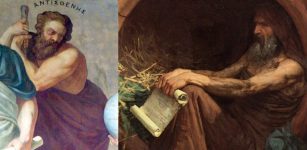 Antisthenes And Diogenes – Founders Of Cynicism Were Ancient Greek Philosophers
Ancient History Facts | Jan 7, 2018
Antisthenes And Diogenes – Founders Of Cynicism Were Ancient Greek Philosophers
Ancient History Facts | Jan 7, 2018 -
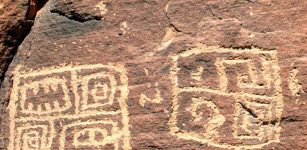 Controversial Evidence – Ancient Chinese Visited America 2,500 Years Ago
Civilizations | May 9, 2015
Controversial Evidence – Ancient Chinese Visited America 2,500 Years Ago
Civilizations | May 9, 2015 -
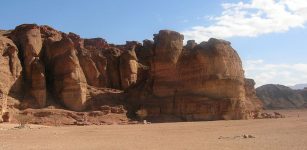 3,000 Years Ago Human Activity Destroyed Vegetation And Irreparably Damaged The Timna Valley Environment
Archaeology | Sep 23, 2022
3,000 Years Ago Human Activity Destroyed Vegetation And Irreparably Damaged The Timna Valley Environment
Archaeology | Sep 23, 2022 -
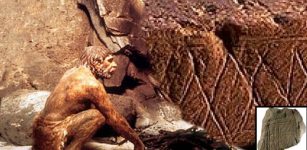 Skilled Neanderthal Hand Engraved Ancient Stone And Hashtag Symbol
Archaeology | May 7, 2018
Skilled Neanderthal Hand Engraved Ancient Stone And Hashtag Symbol
Archaeology | May 7, 2018 -
 Mysterious Cucuteni-Tyrpillian Culture Burned Their Settlements For Unknown Reasons
Civilizations | Feb 12, 2021
Mysterious Cucuteni-Tyrpillian Culture Burned Their Settlements For Unknown Reasons
Civilizations | Feb 12, 2021 -
 Secrets Of Namibia’s Fairy Circles Solved – Self-Organizing Plants Are The Creators – New Theory
Archaeology | Oct 21, 2022
Secrets Of Namibia’s Fairy Circles Solved – Self-Organizing Plants Are The Creators – New Theory
Archaeology | Oct 21, 2022 -
 Why Has Only One Such Puzzling Ancient Object Been Found In Norway?
Artifacts | May 4, 2018
Why Has Only One Such Puzzling Ancient Object Been Found In Norway?
Artifacts | May 4, 2018 -
 Huge Unknown Ancient Lost World Discovered Inside Giant Sinkhole In China
News | May 19, 2022
Huge Unknown Ancient Lost World Discovered Inside Giant Sinkhole In China
News | May 19, 2022 -
 Ancient Petroglyphs Of Cholpon-Ata And Mysterious Balbals Figures That Guard Grave Sites, Kyrgyzstan
Featured Stories | Aug 24, 2015
Ancient Petroglyphs Of Cholpon-Ata And Mysterious Balbals Figures That Guard Grave Sites, Kyrgyzstan
Featured Stories | Aug 24, 2015



